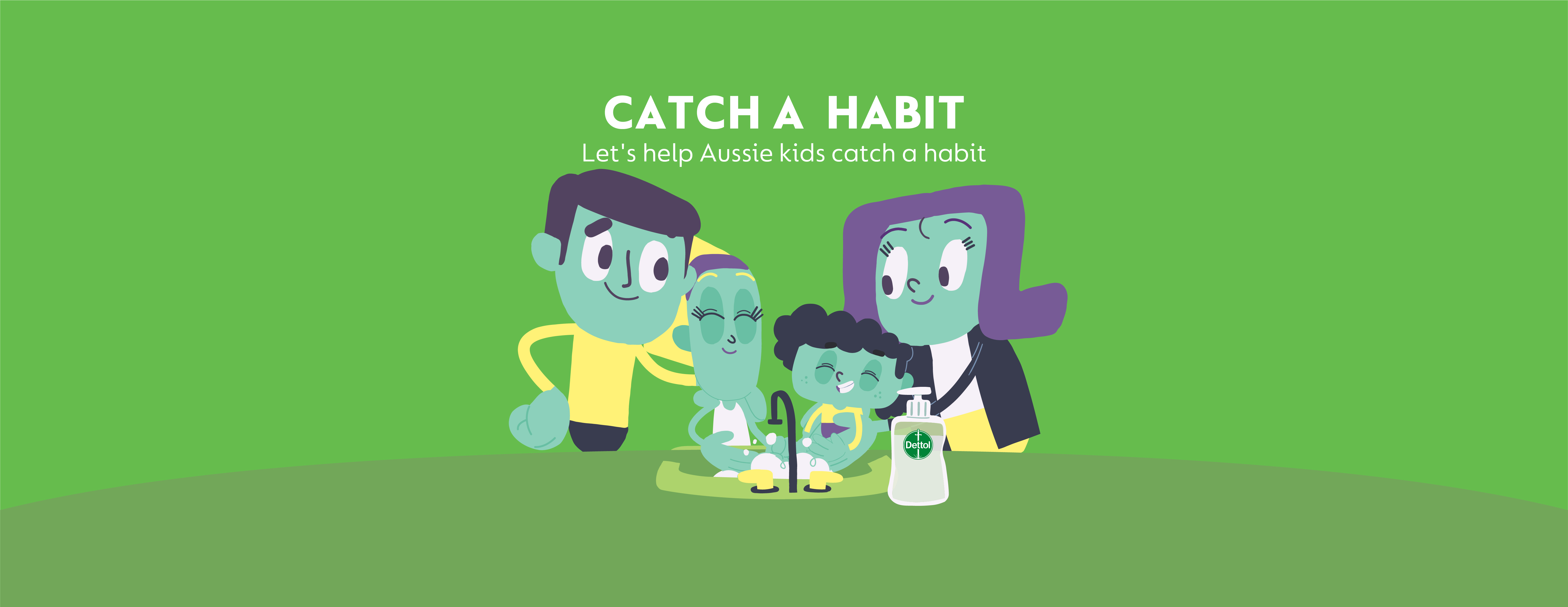Good hygiene habits are good for us, but they’re even better for those around us. Why? Because kids can’t help but pick up what they see around them. So, to protect the ones we love the most, it’s time we lead by example – let’s make good hygiene habits infectious!
Toilet Hygiene
One of the most important parts of personal hygiene is washing your hands with soap and water every time you go to the toilet.
Bathrooms tend to be warm and humid environments, so they are an ideal setting for germs to thrive. There are trillions of germs found in both our urine (pee) and faeces (poo), and when we go to the toilet, some can end up on many bathroom surfaces, including the toilet seat and toilet handle.
Even flushing can cause tiny droplets of germs to enter the air and land on the floors or walls.In public bathrooms, bacteria have also been found on door handles, hand dryers and paper towel dispensers.
Luckily, most of the time the risk of infection by these germs is low. But if they get on your hands and you don’t wash them off, then you may end up spreading these germs to others. Taking time to wash your hands properly every single time you go to the toilet is one of the best ways to protect yourself and those around you.
Toilet Training
Learning to use the toilet is a major milestone for children, and an important opportunity to teach them about the good hand hygiene in the bathroom.
Build it into your child’s routine by getting them to wash their hands properly after every visit to the toilet or potty, even if they don't end up doing a wee or poo. Make it easy and comfortable by having a foot stool ready at the sink – patience and positivity also help!
Other ways to help keep your child clean and hygienic include:
- Wiping your child's bottom (front to back) until they learn how to do it themselves.
- Floating a ping pong ball in the toilet to help boys aim and minimise mess. Or, ask if they want to wee sitting down.
- Showing your child how to flush – this can be scary for some kids! Stay calm and give simple, clear reassurance.
Finally, don’t forget your own hands! Parents and caregivers should also wash their hands every time they help a child go to the toilet, or whenever they change a nappy.
Food Hygiene
Proper hand washing is a key part of food safety, along with correct food storage and handling. This is because germs can easily grow in food, as well as easily transfer from our hands to our mouths when eating.
It’s advised to thoroughly wash and dry your hands before preparing or eating any food – yes, even if it’s just a snack! A good rule of thumb is to wash your hands after touching something that may have germs (e.g. raw meat, eggs, rubbish) and before touching anything that you want to stay germ-free (e.g. cooked food, utensils).
Other golden rules for food & kitchen hygiene are:
- Don’t let raw meat or meat juices come into contact with other foods – use a separate cutting board and knife for raw meat
- Always wipe down and dry kitchen benches and tables after preparing or serving food on them
- Clean sponges and dish brushes after each use – either rinse them in hot water and wring them out, or put them in the dishwasher on a hot cycle.
Coughs & Sneezes
Germs can be spread through the tiny droplets that are released whenever we breathe, sneeze or cough. During normal breathing, these droplets can only travel relatively short distances. However, droplets formed when sneezing or coughing can travel as fast as 22 metres per second! This means that they can travel much farther, up to several metres.
Practicing good hygiene is one of the most important ways to help stop germs spreading this way. Good hygiene includes covering your mouth and nose with a tissue when you sneeze or cough and throwing the tissue in the bin straight away.
Another option is to sneeze or cough into your elbow – this can be a helpful strategy to teach children who struggle with blowing their nose or don’t always have tissues around.
Good hygiene also involves washing your hands after sneezing or coughing, or after being in close contact with someone who has been sneezing or coughing. Regularly cleaning frequently-touched surfaces (e.g. keyboards, phones, door handles) will also help to remove and stop the spread of germs.
Public Transport
Public transport is a great way to get around, but it’s also a place where germs can spread. This is because trains, buses, trams and other public transport vehicles are usually closed environments where people are sitting close together and breathing the same air. If someone coughs or sneezes without covering their mouths, the risk of germs spreading is even greater.
Germs can be found on public transport handles, seats and windows – all surfaces that our hands will no doubt come into contact with at one point or another. Properly and regularly washing our hands is one of the best ways to protect ourselves from these germs.
Of course, accessing soap and water while out and about is not always possible, and in these cases using an alcohol-based hand sanitiser is a great alternative. This goes for any other public place too, not just transport!
Children can also use hand sanitisers, but just be sure to supervise them. Otherwise, disposable wipes are also a handy option on-the-go.
